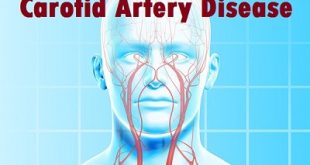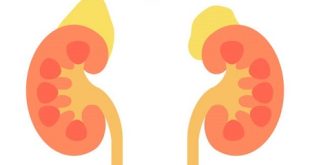Definition
Congenital adrenal hyperplasia is a genetic disorder of the adrenal glands. If your child has this condition, it means that her adrenal glands don’t produce enough of the vital hormones cortisol and aldosterone. As a result, her body produces too much androgen. When there is not enough cortisol and aldosterone, the body will make too much of certain male steroid hormones called androgens.
The overabundance of androgens is responsible for the ambiguous genitalia in females born with this condition. CAH is one of the most common disorders of sexual differentiation (DSDs), which describes a wide range of diseases in which development of the sex organs does not occur as it normally would. CAH is also the most common cause of ambiguous genitalia, a term which describes children whom you cannot tell by looking at their genitals whether they’re male or female.
Epidemiology
Race
Congenital adrenal hyperplasia occurs among people of all races. Congenital adrenal hyperplasia secondary to CYP21A1 mutations and deletions is particularly common among the Yupik Eskimos.
Sex
Because all forms of congenital adrenal hyperplasia are autosomal recessive disorders, both sexes are affected with equal frequency. However, because accumulated precursor hormones or associated impaired testosterone synthesis impacts sexual differentiation, the phenotypic consequences of mutations or deletions of a particular gene differ between the sexes.
Age
Classic congenital adrenal hyperplasia is generally recognized at birth or in early childhood because of ambiguous genitalia, salt wasting, or early virilization. Nonclassic adrenal hyperplasia is generally recognized at or after puberty because of oligomenorrhea or virilizing signs in females.
Types of Congenital adrenal hyperplasia
CAH may be ‘‘classical’’ or ‘‘non-classical.’’ Your doctor will tell you which form of CAH your child has.
Classical CAH
In classical CAH, the body produces more androgens (male hormones) than it needs. At the same time, there is too little cortisol (stress hormone) and sometimes too little aldosterone (salt saving hormone). This type of CAH occurs in about 1 out of every 15,000 births.
There are two forms of classical CAH: salt-wasting and simple virilizing.
- Salt-wasting CAH is the more common and severe form. With salt-wasting CAH, too much sodium and water are lost through urine, and the amount of potassium in the body increases, causing dehydration (loss of fluids) and very low blood pressure.
- Simple-virilizing CAH does not cause the body to lose sodium and water. Therefore, it is less severe than salt-wasting CAH. Like salt wasters, simple virilizers produce too many androgens.
Both salt-wasting and simple-virilizing CAH patients may develop an ‘‘adrenal crisis’’ during periods of physical stress (illness, surgery or trauma). This is a life-threatening situation and urgent medical care is needed.
Non-classical CAH
Non-classical CAH (NC-CAH) is milder than classical CAH. It is often referred to as “lateonset” CAH, because symptoms do not appear until later in life. Currently, this type of CAH is not detected through newborn screening of infants.
Newborns with NC-CAH do not have genital changes. Instead, the disease is diagnosed when the effects of excess androgen appear in childhood (rapid growth, early puberty) or during the teenage or adult years (too much face and body hair, severe acne, irregular periods).
Congenital adrenal hyperplasia risk factors
Factors that increase the risk of having CAH include:
- Parents who both have CAH or are both carriers of the genetic defect for the disorder
- Certain ethnic heritages, such as Ashkenazi Jew, but also Hispanic, Italian, Yugoslav and Yupik Inuit
Causes of Congenital adrenal hyperplasia
- Under normal circumstances, ACTH stimulates the adrenal glands to produce the chemical building blocks (precursors) which make cortisol.
- There is a feedback system which controls ACTH production. The rate of release of ACTH depends on the amount of cortisol in the bloodstream. As more cortisol is produced it reduces the release of ACTH, thus slowing down the stimulation of the adrenals and production of cortisol until a balance between these two hormones is achieved.
- In CAH there is a blockage in the assembly line that makes cortisol from the precursors. So, the blood level of cortisol is low, and there is never enough cortisol produced to slow the release of ACTH. This means the adrenal glands are constantly stimulated, causing an overgrowth of the adrenal gland (hence, the term hyperplasia).
- The large amounts of the precursors from all this stimulation build up in the adrenals and leak out into the bloodstream. One of these is testosterone, a male hormone, which causes the male-like (virilising) features seen in the condition.
- The blockage may also cause aldosterone production to be reduced. A drop in the level of this hormone can have an effect on the salt level in the bloodstream.
Enlargement of clitoris (female)
Symptoms
The symptoms associated with congenital adrenal hyperplasia (CAH) depend upon the type of enzyme deficiency and the amounts of cortisol, aldosterone, and androgens that are produced. Symptoms may vary over time and can worsen with illness and stress.
Those associated with the form of classic 21-hydroxylase deficiency CAH that causes excess loss of fluids and salt (“salt-wasting”) can lead to a life-threatening adrenal crisis.
Salt-wasting CAH signs and symptoms (also known as adrenal crisis) may include:
- Abnormal heart rhythm, rapid heart rate
- Confusion
- Dehydration
- Low blood pressure
- High blood potassium (hyperkalemia)
- Irritability
- Low blood sodium (hyponatremia)
- Vomiting
- Low blood glucose (hypoglycemia)
Females with classic 21-hydroxylase deficiency may have external sex organs that are not clearly male or female (ambiguous external genitalia) but normal reproductive organs (uterus, fallopian tubes, and ovaries).
Signs and symptoms associated with excess male hormones (androgens) in both males and females in childhood and early adolescence may include:
- Accelerated skeletal growth (tall during childhood but short as adults)
- Acne
- Deep voice
- Enlarged penis (males)
- Enlargement of clitoris (females)
- Excess hair on face and body (hirsutism) in females
- Infertility or decreased fertility
- Irregular menstruation (females)
- Excess muscle growth
- Early development of pubic and armpit hair
Complications
One possible complication of CAH is an adrenal crisis. This is a rare but serious condition; occur in small percentage of individuals who are treated with glucocorticosteroids. Management during illness or stress can be challenging and within hours can result in decreased blood pressure, shock, and death. Signs and symptoms of this condition include:
- Dehydration
- Diarrhea
- Vomiting
- Shock
- Low blood sugar levels
An adrenal crisis requires prompt medical attention.
Diagnosis and test
In many countries, newborns are screened for CAH with a blood test from a heel prick right after birth (referred to as newborn screening). Diagnosis in infancy or later also may include:
- A history and physical examination
- Blood test
- Genetic test
Sometimes, when there is a known family history of CAH, a fetus is diagnosed before birth. Experimental prenatal treatment of CAH is controversial experimental, and experts recommend it be done only in the context of an approved clinical trial (a research study that involves people).
Treatment of Congenital adrenal hyperplasia
The treatment options for CAH may include:
Hormone stabilization
- The first step in treatment for CAH is to put a baby on hormone replacement medication to even out the levels of hormones in the blood.
- This is important because 75 percent of children with CAH are “salt-wasters”. This means that the child’s adrenal glands are not producing enough of a mineral called aldosterone.
- An insufficient amount of aldosterone can cause a child’s body to rapidly lose salt. These babies require urgent steroid replacement or they could be at risk for going into shock.
Surgery
- Once the hormonal therapies are in place, parents will consult with doctors to come up with a plan to correct any significant ambiguity of the genitalia.
- Girls who are born with male-appearing genitalia often undergo reconstructive surgery (usually when a baby is a few months old) to reduce the clitoris size and make the vaginal opening better defined.
- At Children’s, doctors prefer to do the reconstructive surgery when a baby is approximately 6 months old, after she’s had the chance to stabilize medically and the risks of anesthesia are reduced. This waiting period also allows the clitoris to reduce in size through steroid management alone.
Hormone replacement therapy (HRT)
In terms of lifelong management of CAH, the goal is to keep hormone levels normal.
Prevention
- Parents with a family history of congenital adrenal hyperplasia (of any type) or a child who has the condition should consider genetic counseling.
- Prenatal diagnosis is available for some forms of congenital adrenal hyperplasia. Diagnosis is made in the first trimester by chorionic villus sampling. Diagnosis in the second trimester is made by measuring hormones such as 17-hydroxyprogesterone in the amniotic fluid.
- A newborn screening test is available for the most common form of congenital adrenal hyperplasia. It can be done on heel stick blood (as part of the routine screenings done on newborns). This test is currently performed in most states.
 Diseases Treatments Dictionary This is complete solution to read all diseases treatments Which covers Prevention, Causes, Symptoms, Medical Terms, Drugs, Prescription, Natural Remedies with cures and Treatments. Most of the common diseases were listed in names, split with categories.
Diseases Treatments Dictionary This is complete solution to read all diseases treatments Which covers Prevention, Causes, Symptoms, Medical Terms, Drugs, Prescription, Natural Remedies with cures and Treatments. Most of the common diseases were listed in names, split with categories.







